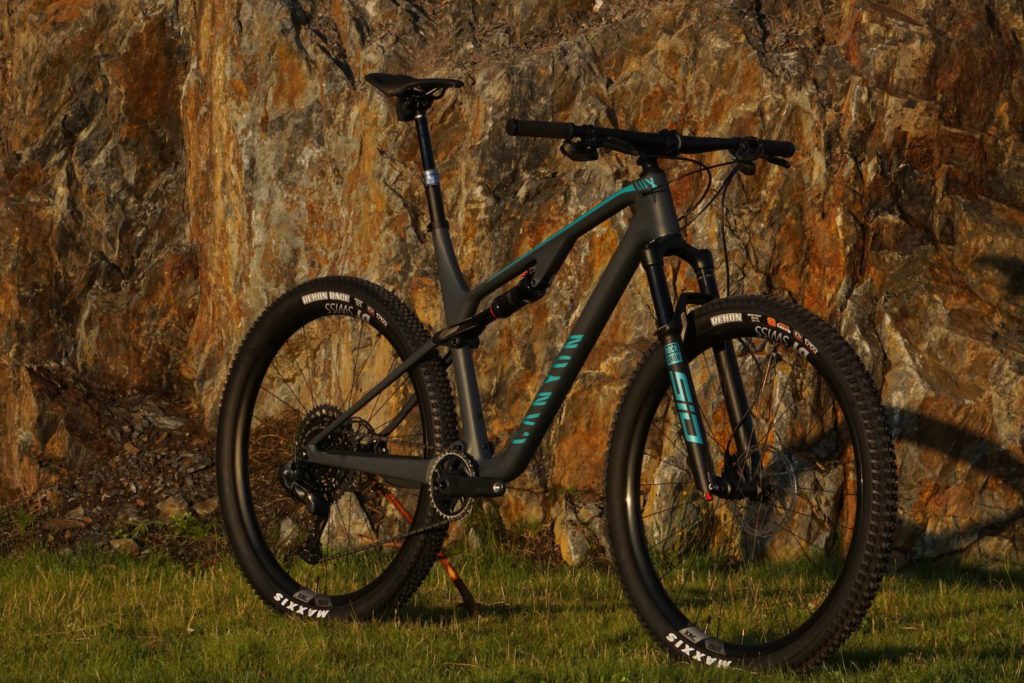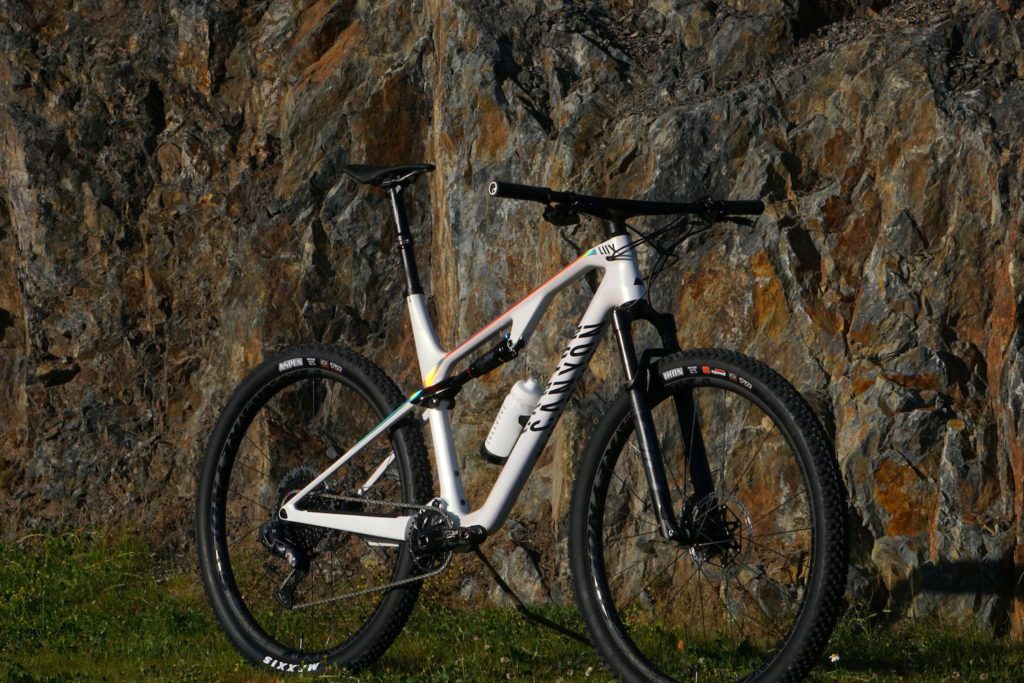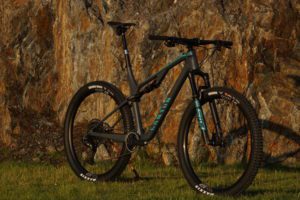Lux vs. Lux: How different are Canyon’s new XC bikes?
A comparative review of the German brand's two cross country bikes
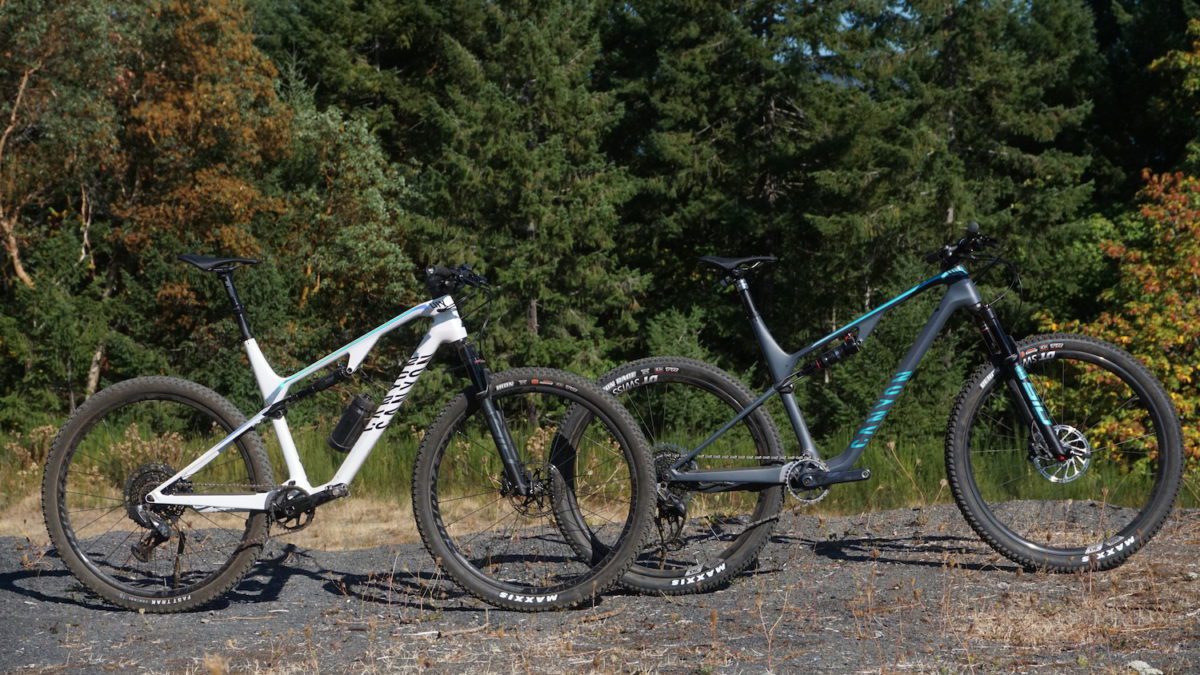
With the release of Canyon’s Lux World Cup, the purebred race bike gets even closer in design to the recently released Lux Trail. How much difference can an extra 10 mm of suspension travel (and a few more mm of reach) actually make?
Well, with the Lux World Cup still only sporting 100-mm of travel, front and rear, it remains a single-purpose bike. The Lux Trail, by contrast, tempers that a little. It has 10 mm more rear-wheel travel and 20 mm more up front. That’s not the only difference, though. Canyon tailors the geometry and suspension traits of both bikes for different purposes. These small differences add up. The end result is two bikes that look similar, but are distinct enough on trail to stand apart, even when their name remains close.
What are their relative advantages (and weaknesses)? Which one is better for you, and why? Let’s dive in.
The bikes: Canyon Lux SLX versus Lux World Cup versus Lux Trail
Both new bikes, the Lux Trail and Lux World Cup, are evolutions of the outgoing Lux SLX. The original was rather conservative in design, with a steep, 70-degree head tube angle, short reach and long stem. For the Lux Trail, Canyon moved closer to the more modern version of cross country design that is gaining popularity. Reach grew by 20 mm per size, with shorter stems to keep a similar seated position on the bike. It also gets a reasonably slack 67.5-degree head angle. Not extreme by any measure, but a big Change from the SLX.
With the World Cup, Canyon takes a more measured approach to change. On new models, reach grows by around compared to the SLX, finding a middle ground between the Lux Trail and SLX. Head angle slackens to 68.5 degrees. The World Cup model also has a substantially lower stack height than the Lux Trail, letting racers keep an aggressive position on the bike. While the SLX and Trail use the same rear triangle, Canyon shortens the World Cup’s chainstays to keep the steering fast and keep the overall wheelbase tighter.
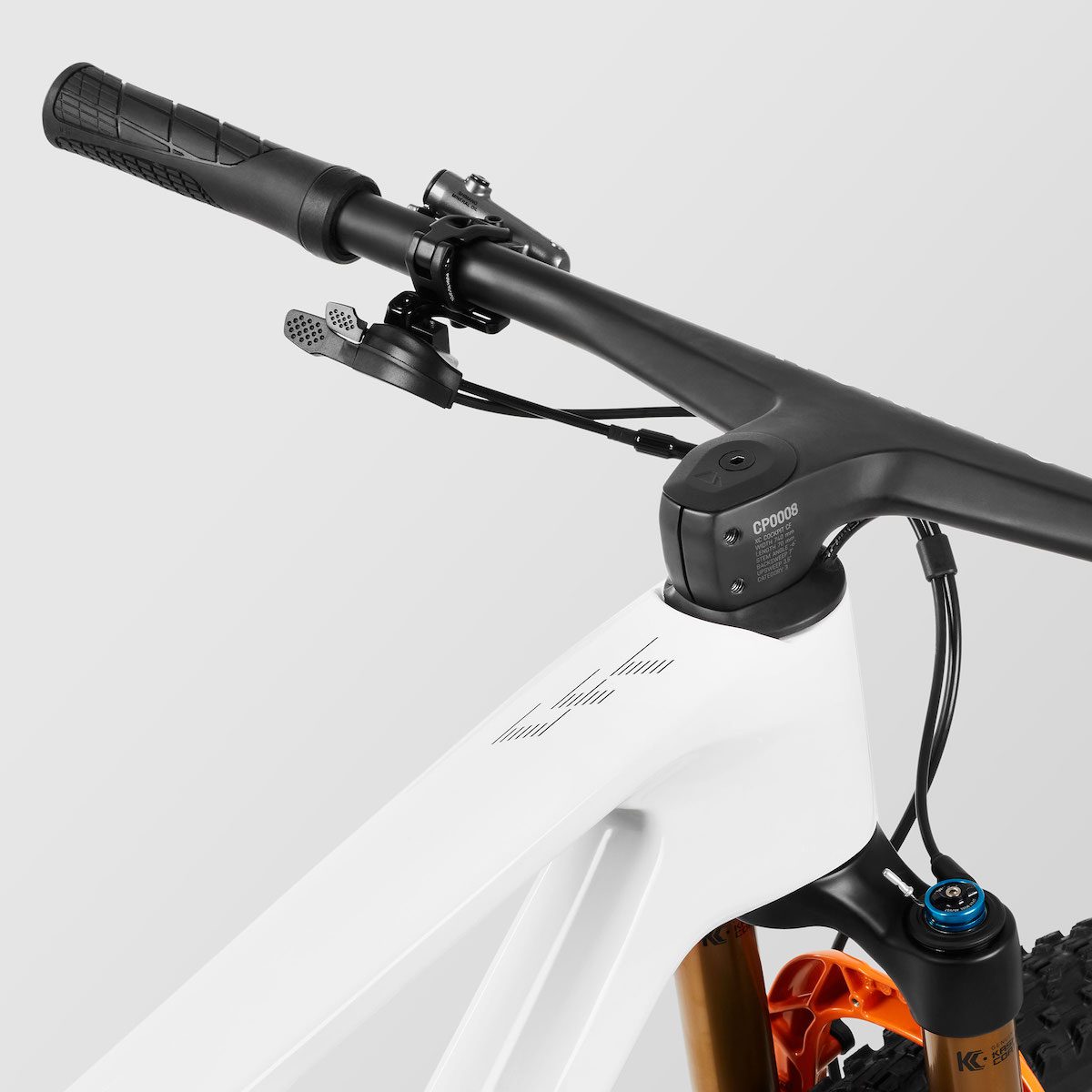
There’s also weight, of course. The Lux Trail is a light 1,905 grams. The SLX was an impressive 1,662 grams. With the Lux World Cup, Canyon reworked the shock mount and suspension position to drop the CFR frame to a staggering 1,525 grams.
Less visible are the changes to the suspension. 100 and 110 mm are, of course, going to feel different no matter what. Canyon goes further, making the Lux World Cup’s pedaling platform more supportive with a higher anti-squat for a more efficient ride. The Lux Trail is still quite efficient but favours a slightly more forgiving ride over pure climbing performance. Both lines come with remote a lock-out lever installed on most models, so this really only applies when climbing singletrack or descending. Both will have a fully locked-out option for smooth climbing and sprints if you choose.
Finally, Canyon moves the Lux Trail to 760-mm wide bars with a 60 mm stem. The Lux SLX and World Cup both use 70 mm stems on 740-mm wide bars. If you opt for the CFR model, that’s Canyon’s own ultra-stiff CP008 integrated carbon fibre bar-stem.

On the trail: How much difference does 10 mm make?
We spent a fair amount of time riding the Lux SLX and Lux Trail back to back. While the two bikes offer an overall similar experience, there are areas where one stands out compared to the other. These differences are less exaggerated on the Lux World Cup in some cases, and will be more distinct in other cases.

Canyon Lux Trail
Is the Lux Trail a whole new bike? Is it a trail bike? Well, sort of. It’s still very much a cross country race bike, but one that will also be more supportive of extracurricular fun. It’s not a full-on short travel trail bike by any means, it still has limitations, but it is easier to ride when the trails get harder. That’s partially the added suspension, but also the geometry.
Riding a few intermediate descents back to back, both bikes feel fast. The Lux Trail is, quite often, a few seconds faster. The Lux Trail is a rocket on flowing, fast single track, accelerating out of corners. It’s still a cross country bike in that continuous sections of rough singletrack – rocks, roots or braking bumps – still results in more feedback through the handlebars than a less-speed focused bike.
Canyon Lux CF SLX and Lux World Cup
The new Lux World Cup may seem like a middle ground between the Lux SLX and Lux Trail, but it shares much more in terms of intent and design with the Lux SLX. Both are optimized for racing speed over any other concerns. The geometry might have changed a bit, but the intent is the same. Going really, really fast.
The SLX, in contrast to the Lux Trail, thrives on tighter singletrack. With the shock open, it is more efficient to climb and quicker to accelerate. With lighter components and frame, it’s going to go uphill faster. The Lux Trail isn’t slow, but it’s not as sharp as the shorter-travel version. Tight switchbacks and twisting singletrack are also relatively easier to manage on the SLX, due to the shorter wheelbase and steeper geometry.
Descending, there’s also more feedback than on the Lux Trail. It’s not uncomfortable to descend, but it’s also not as fast or forgiving as the Lux Trail. Miss your line and you’ll feel it more than you will on the Lux Trail. All this will be slightly different on the Lux World Cup, with more feedback from the suspension due to Canyon’s kinematic changes but also a bit more confidence from the slacker design.
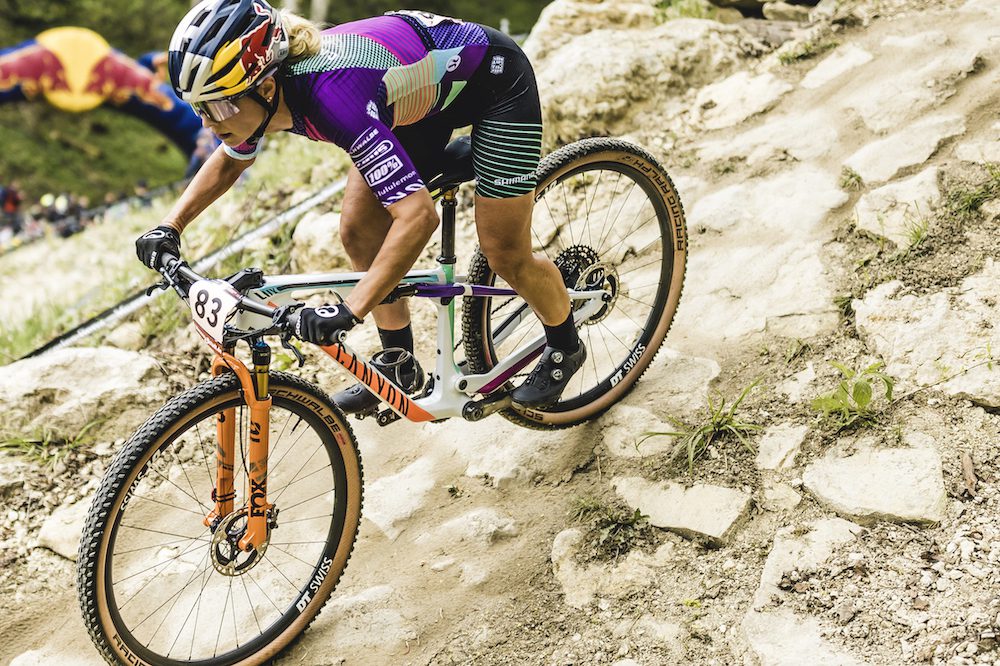
Sparkle vs Shine: Podium hunter or thrill chaser
All of these differences are a measure of degrees, not drastic differences. All versions of the Lux are very fast cross country race bikes. That makes the choice between them more of a “horses for courses” equation. Which Lux is hot to trot will depend on how you plan to ride it.
With the Lux Trail, the added confidence racing into the unknown will be an advantage in longer, marathon-style races or more technical stage races. I raced BC Bike Race on it in the fall and, on several occasions, was happy to have more suspension, even if it was only a little more. Canyon’s also honing in on the fact that not everyone who rides XC wants to race. The Lux Trail is still very fast, without the sacrifices that an extreme focus on World Cup racing requires.
In contrast, both 100-mm bikes are 100 per cent focused on finding every possible advantage on a race course. While the Lux Trail is fast, the extra one or two per cent efficiency and speed climbing will be enough for some racers to opt for the shorter travel versions. That also suits a situation where you’re doing multiple laps of a course where you’ve selected your lines and can focus on nailing them with precision, at speed compared to the relative unknown of a stage race.
Conclusions and choices
Canyon may be splitting hairs with the different versions of the Lux but, as a company of its size, it can. If you’re particular about what you’re looking for in a bike, and who isn’t, you can benefit by getting exactly what you want, not something “close enough.” But which Lux is right for you? Well, if your biggest concern is absolute speed on race day, the Lux World Cup will shine brightest. The CFR versions are legit elite race bikes out of the box. The CF versions are still lighter than many competitors. If you want to race sometimes, or do more technical races, or just ride really fast without ever pinning on a number, the more forgiving Lux Trail might be the better choice.
Once you figure out which frame suits your interests best, you have numerous options in different price ranges. Canyon offers four versions of the Lux Trail, from the $7,750 Lux Trail CF 9 Emily Batty edition to the $4,55o Lux Trail CF 6. There are four versions of the Lux World Cup – two CF and two CFR builds – starting from the $4,700 Lux World Cup CF 6 up to the $10,400 Lux World Cup CFR LTD.
If the “Trail” part of Lux Trail is the part that grabs your attention most, you might want to look elsewhere. Both are still cross country bikes. Canyon’s Neuron or Spectral 125 are both short travel bikes that focus more on confidence and fun trail riding over race speed and might be a better option.
